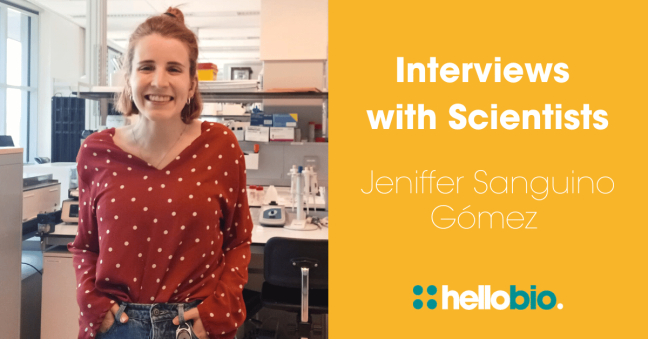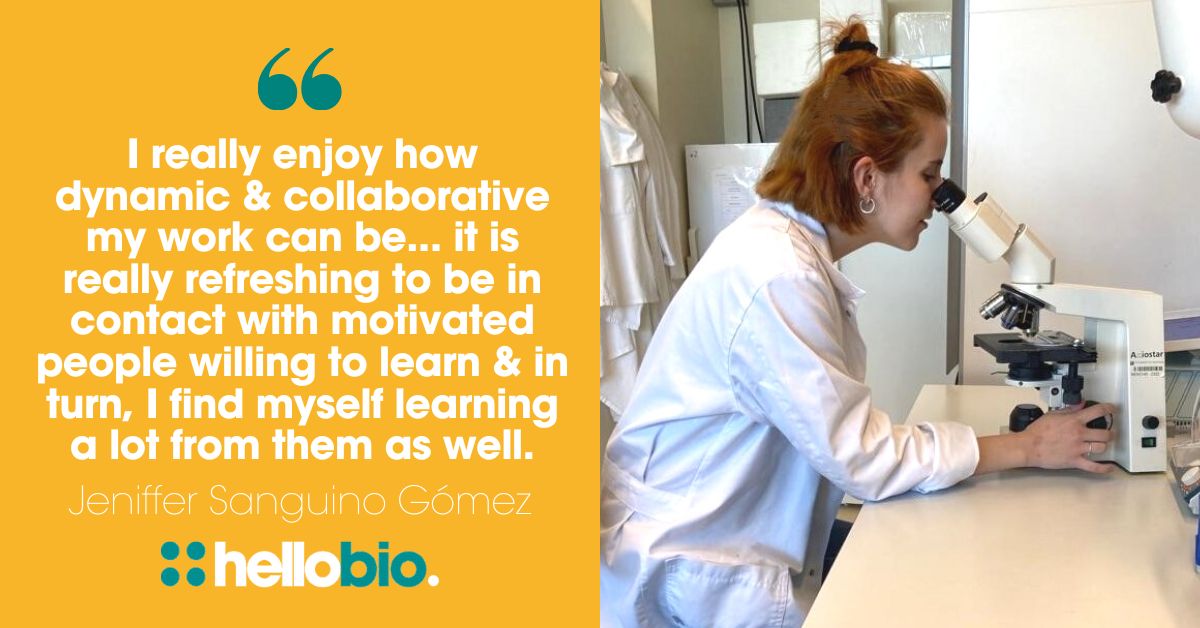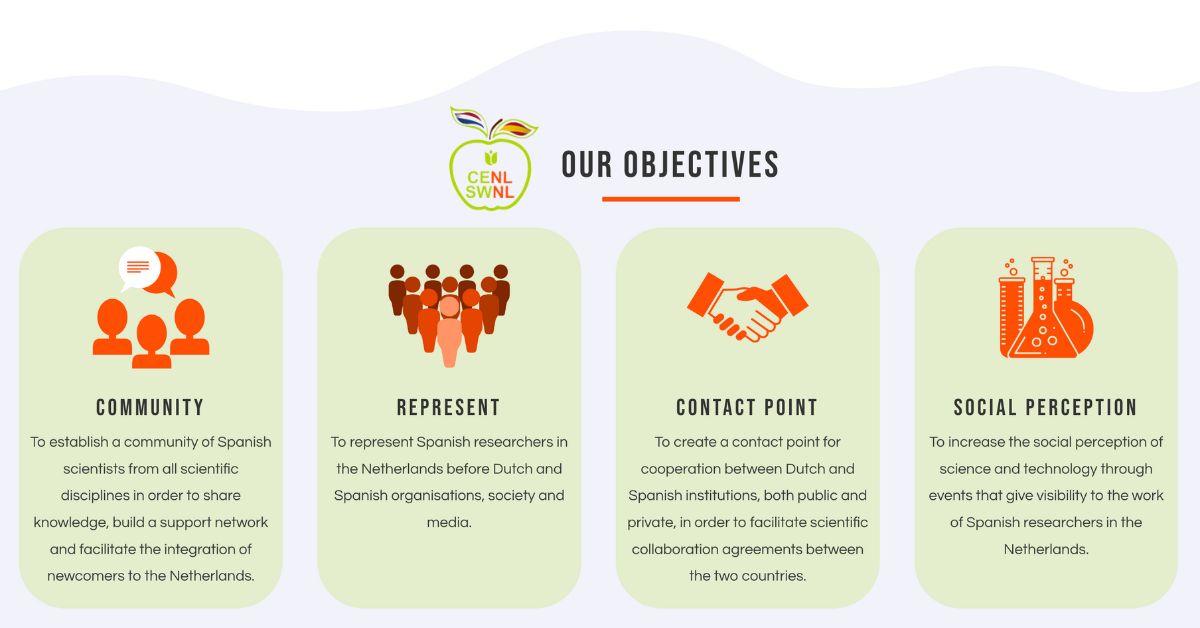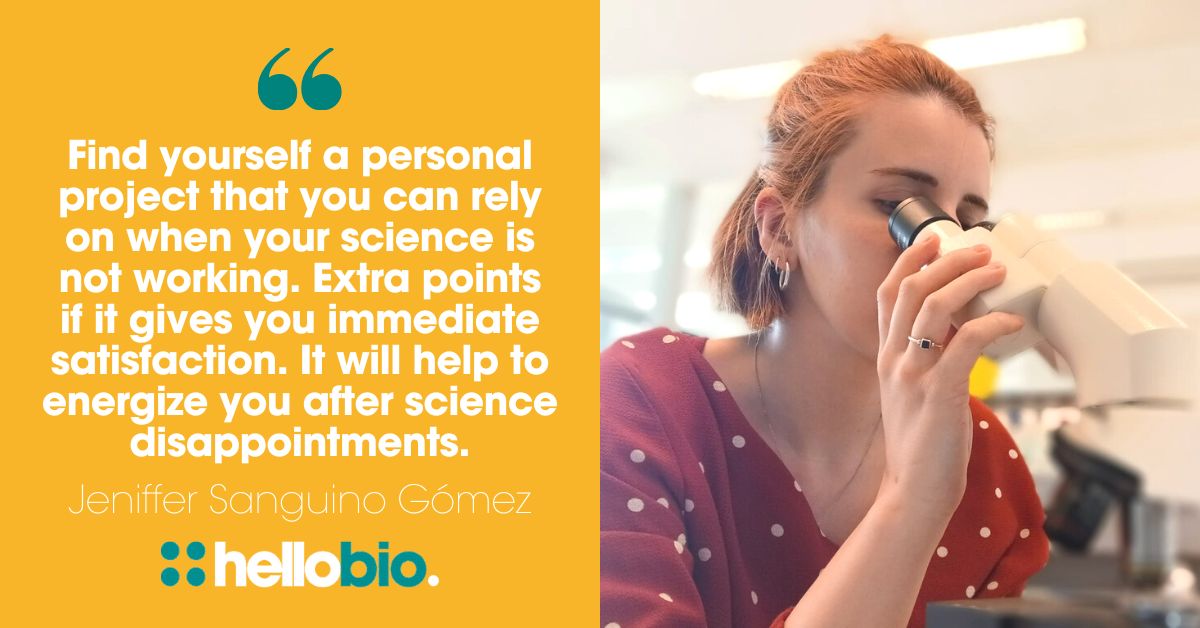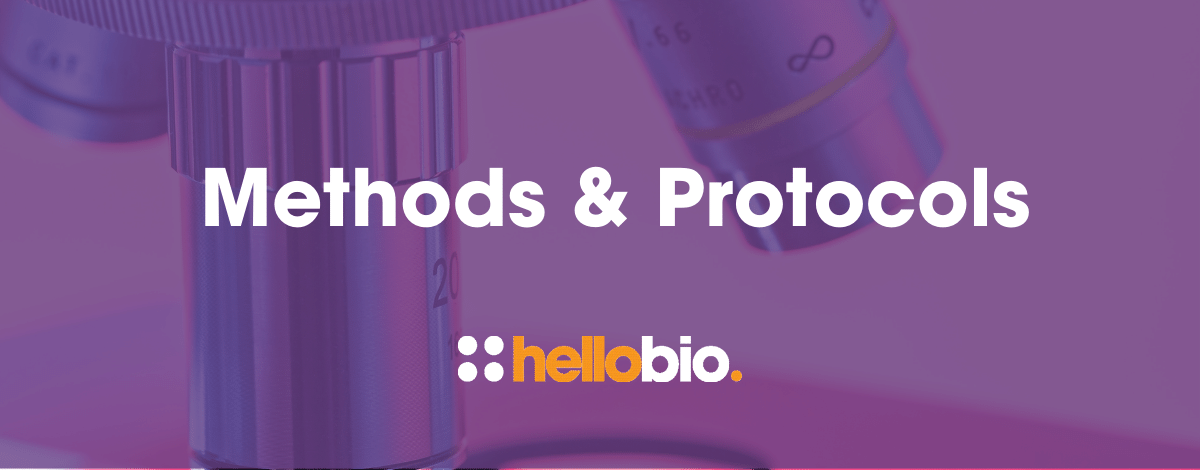Interviews with Scientists: Jeniffer Sanguino Gómez
It’s time for the next in our Interviews with Scientists series, and this time we were lucky enough to chat with Jeniffer Sanguino Gómez of the University of Amsterdam! Jeniffer is in the fourth year of a PhD in Neuroscience, focusing on neuroendocrinology and how stress affects the brain.
She has studied in several different European countries, and is involved in a community support programme for Spanish scientists living and working abroad. She was recently awarded funding by FENS for a Brain Awareness Week project, and is passionate about art and its links with science.
We spoke to Jeniffer about her career so far, her PhD research, the challenges facing life scientists today, and her advice for younger scientists who are just starting out in their STEM careers…
Thanks for speaking with us, Jeniffer! Please can you tell us a little bit about your current role at the University of Amsterdam?
I am in the fourth year of my PhD in Neuroscience in the Brain Plasticity Group at the University of Amsterdam. My area of research is Neuroendocrinology and I am researching how stress and stress hormones affect the brain and cognition, in particular learning processing. I don’t do this alone though! I have an amazing group of colleagues that I can count on, with the invaluable help of master and bachelor students that intern with me!
What is the focus of your PhD research?
In my PhD I am working on understanding the cognitive impairment caused by traumatic experiences early in life. It is known that young mice that were neglected by their mothers early in development have difficulties in encoding new memories, especially when those memories are negative (potentially as a coping mechanism). Through my thesis, I study how these stressed brains are differently wired compared to normal ones and test potential pharmacological treatments to prevent this neuronal malfunction.
What excites you most about the work that you do?
I really enjoy how dynamic and collaborative my work can be! One day I am doing animal work, another day I am working on the bench or in the microscope, another I am analyzing data, giving a presentation… or suddenly I need to be a graphic designer to prepare the best poster! But among everything I really enjoy working with students, it is really refreshing to be in contact with motivated people willing to learn and in turn, I find myself learning a lot from them as well.
Did you always want to work in science when you were younger, and if so why?
Although my parents were not involved in science - my dad being a stonemason and my mum a geography teacher - I was an incredibly curious child. The word why was always in my mouth to such an extent that the present for my fifth birthday was The book of Why’s (with answers to everything a kid can ask). My interest in science was sparked by my Biology teacher, who was an inspiring figure. She taught me about the beauty of science and encouraged me to pursue Health Biology for my Bachelor.
What do you think are the biggest challenges facing life scientists today?
I find it particularly challenging to keep up with the extremely fast-changing scenarios, the new techniques, the new publications, all while you work on your own research and adapt it on-the-go according to these new possibilities. Not only that, but you also have to look for funding, collaborations, teach students, discuss results with your colleagues, think about your short, medium and long-term future… it is a heavily multifaceted and demanding job, and it takes a huge toll on the well-being of everyone.
You are involved in a community support association for Spanish scientists living and working in the Netherlands. What inspired you to get involved with these activities, and why are they important?
The experiments that I need to do for my PhD can last many months before I get the final results. It is sometimes frustrating to wait that long, and at some point, I felt like I needed my work to have a more immediate effect.
Thanks to social media I got in contact with the Spanish Association of Spanish Researchers in the Netherlands (CENL-SWNL), which works to create a space in which to share ideas, support each other during our stay in the country, connect Dutch and Spanish institutions and, of course, science outreach! It has been a great experience, their members are very active, welcoming and passionate and they are promoting Science-related projects (scicomm via podcast, interviews and blog, workshops at schools, etc.). Feel free to check what we do! https://www.cenetherlands.nl/
You were recently awarded funding from FENS for a Brain Awareness Week project entitled ‘Connections: More than just neurons!’. Can you tell us a bit about the project, and why did you choose this topic?
Last year, we created a Neuroscience Committee in CENL-SWNL to promote the work done by Spanish neuroscientists in the Netherlands and create new synergies in our field. NeuroCENL kicked-off with two conferences that were a total success. However, we wanted to reach not only our peer scientists but also the general population, so we decided that the Brain Awareness Week was the best opportunity for this. Thanks to, among others, FENS and the Dana Foundation we organized ‘Connections: More than just neurons’! As we wanted to reach everyone, we designed a multifaceted project.
We organized conferences for adults, where we explained key aspects of the teenage brain, the role of the gut microbiota for the brain, the relevance of meditation and we presented the image and main works of Santiago Ramón y Cajal. Precisely, this project is part of the “Cajal Year” organized by the Spanish Foundation for Science and Technology in commemoration of the 100th anniversary of his birth.
We organized Neuroscience workshops for the youngest participants, where, according to their age, we taught them about neurons, brain implants for the blind and DNA extraction, amongst other things. We celebrated these activities in international schools in the Netherlands, ALCE classrooms (of Spanish immersion) and an open activity at the Cervantes Institute of Utrecht.
Last, we launched Corpus Callosum, an exhibition where Art and Science meet. We exhibited the neuro-inspired artwork of the Spanish artist Ramón Trigo, guided by the commissar Silvia Amarelo, and infographics about different key aspects of Neuroscience made by different neuroscientists of CENL-SWNL. The initiative was a total success in terms of attendance and engagement, so we can be really proud of what we did!
What's the most valuable lesson you have learned in your career so far?
Be humble and treat everyone nicely. You can learn from the most unexpected people so be always ready to listen.
How do you see your career progressing in the future/where do you see yourself in 10 years?
This question is dangerous! It can seriously stress any PhD student (especially a stress researcher!). I am passionate about Science. I do not know what my next steps will be, but I would like them to be in academia, studying stress, and learning many new techniques and approaches that I will be able to use in my projects. Ten years is a long time, but I hope I will find myself working with wonderful people who are also passionate about Science (and stress!), teaching and learning from others, and doing the best research I am capable of.
What key piece of advice would you give to a younger scientist just starting out in their career?
Find yourself a personal project that you can rely on when your science is not working. Extra points if it gives you immediate satisfaction. It will help you to energize after science disappointments, and set boundaries to improve your work-life balance.
Outside of work, what do you enjoy doing most? (e.g. hobbies, passion projects, etc.)
Art is my second passion. I am extremely lucky that in the Netherlands we have a Museumkaart with which I can visit museums around the whole country. I am always in search of new exhibitions and creative things to do. And I’m really involved in projects that bring together art and science. After all, they are two languages that aim the same!
What do you think is the greatest scientific discovery OR invention of all time?
I would say writing. Humankind as we know starts with writing. Writing allows us to transmit knowledge, feelings and ideas across time and space. It allows for the creation of permanent records that could be transmitted to future generations. Writing has played an essential role in shaping human history and continues to be a vital tool for education, creativity, and intellectual advancement.
What’s your favourite science quote and/or science joke?
Quote: “How often people speak of art and science as though they were two entirely different things, with no interconnection. That is all wrong. The true artist is quite rational as well as imaginative and knows what he is doing; if he does not, his art suffers. The true scientist is quite imaginative as well as rational, and sometimes leaps to solutions where reason can follow only slowly; if he does not, his science suffers”- Isaac Asimov "The Roving Mind".
Joke: What continues working even after it is fired? “A neuron”
And finally… is there anything else you would like our readers to know?
I just want to say that I am very excited about the next project I am organizing (in collaboration with amazing friends in CENL) combining my two passions!! Scientia is a project where we want to translate our science into the universal language of art! Although it will tackle many different Science fields, Neuroscience will play a central role in this project. This CENL-SWNL project is being done in collaboration with the Spanish artist Ramón Trigo and the art commissar Silvia Amarelo. Do not miss it! https://www.cenetherlands.nl/
_________________________________________________
Connect with Jeniffer Sanguino Gómez:
- LinkedIn: https://www.linkedin.com/in/jeniffersanguinogomez/
- Twitter: @jsanguinogomez
Follow CENL-SWNL online: https://cenl.carrd.co/
_________________________________________________
If you enjoyed this article, why not check out the other resources available on our blog. We are passionate about supporting life scientists including early career life scientists and PhD students - with really low-priced reagents, antibodies and biochemicals, early career scientist grants, and resources to help with both personal and professional development. We know how tough it is - so we hope you find these helpful!
More General Support for Life Scientists
For advice on wellbeing, dissertations, presenting at conferences, wellbeing, PhD support, networking and lots more, we have a huge range of articles to help - just click below:
Save up to 50% on our high purity reagents...
When you get to the stage of planning your experiments, don't forget that we offer a range of low-cost, high-purity agonists, antagonists, inhibitors, activators, antibodies and fluorescent tools (yes - they really are around half the price of other suppliers!) You can use our Quick Multi-Search Tool to search for lots of products in one go, and the range includes:
- Enzyme inhibitors and activators
- Chemogenetic ligands
- Ion channel modulators
- GPCR & ionotropic receptor ligands
- Cell biology reagents & biochemicals
Technical resources
Try our Molarity Calculator: a quick and easy way to calculate the mass, volume or concentration required for making a solution.
Try our Dilution Calculator: an easy way to work out how to dilute stock solutions of known concentrations
We also offer a comprehensive range of technical resources including antibody protocols and methods, product guides and mini-reviews:
And finally, don't forget to check back in with our blog regularly for our latest articles. If there’s something you’d love to contribute to the community, whether that’s an interview or article, drop us a line at hello@hellobio.com
---





